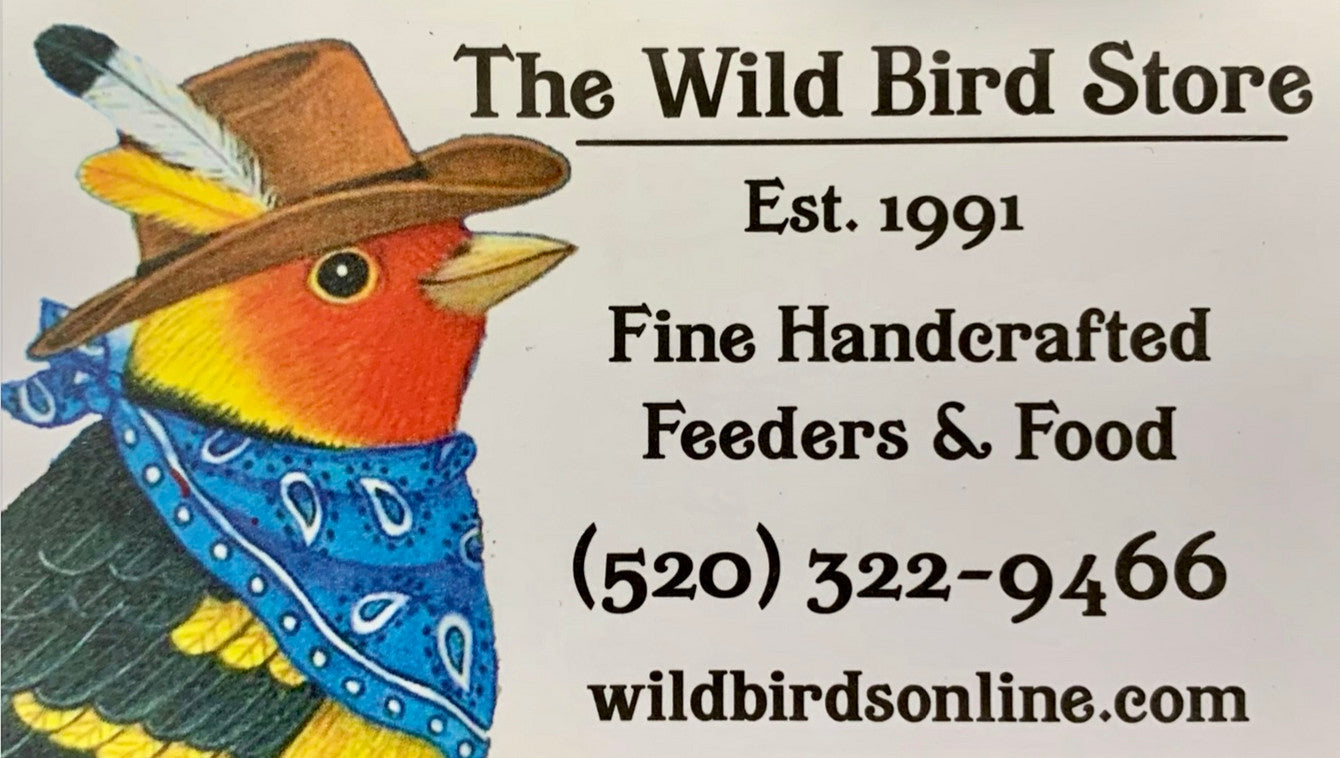News
What's Important to Know About Hummingbird Feeders
WHAT'S IMPORTANT TO KNOW ABOUT HUMMINGBIRD FEEDERS by Jon Friedman This is a revised and expanded version of an article that was first published in the March/April, 1994 issue of The Wild Bird Store Newsletter. IntroductionWe are now well into our third decade of serving our customers and informing our readers about the birds they want to attract to their backyard feeding stations. This article will serve as a basic, concise yet comprehensive review of what makes a good hummingbird feeder. We believe the more you know, the better your selection will fit both your considerations and those of the...
Hummingbird Migration
Hummingbird Migration By Jon Friedman(This article has been recently revised from a May, 1997 newsletter article written by Shani and Jon Friedman) Spring and early summer are the time of year when most hummingbirds migrate north from their winter ranges and late summer through fall months are when they migrate south to their winter ranges. In Arizona, we see it start in January when the Costa’s arrives. Black-chinned, Rufous, and Broad-tails come up in February. Broad-bills, Calliopes, and Blue-throats arrive in March. The rare Lucifer shows up in April. May brings the Violet-crowns and White-ears. Allen’s passes through in July....
Dealing with Uninvited Guests at Your Hummingbird Feeders
Dealing with Uninvited Guests at Your Hummingbird Feeders By Jon Friedman In the Sonoran Desert, we experience more uninvited usurpers of nectar than in any other region of the country. We have other birds, such as woodpeckers and flickers; insects, such as ants, bees and wasps; nectar-eating bats; raccoons; and bears at the higher elevations. All these critters can effectively be dealt with in a variety of ways. Of course, having a high-quality, well designed, no-drip and insect-proof feeder to begin with will eliminate many of these uninvited guests before they ever could become a problem. The complete line of Aspects...
Some Notes about Hummingbird Feeders
Some Notes about Hummingbird Feeders (And how to use them to maximum advantage) By Jon Friedman Hummingbirds are the most popular of all backyard birds in the regions where they are found. They are unique among all birds for a variety of reasons. They provide us with joy, entertaining stimulation, color, beauty, amazing flight and the ability to hover, eat copious amounts of pesky insects, and raise families where we can observe their entire courting and mating rituals and displays. For these reasons, and others, we all enjoy attracting hummingbirds to our yards, watching them feed, nest and raise their...
Nectar Producing Plants and Their Relationship to Hummingbirds
Nectar Producing Plants & Their Relationship to Hummingbirds Illustration by George West There is a very old and intimate relationship between hummingbirds and the nectar producing plants that depend upon them for pollination. In North America there are more than 200 native species of nectar producing flowering plants. These particular flowers are pollinated by a variety of bees, butterflies and, to a lesser extent, our nectar eating bats. However, at least 150 species of these flowers are primarily, and in some instances exclusively, pollinated by hummingbirds. This particular group of flowers have physical features that prevent the other pollinators from...
